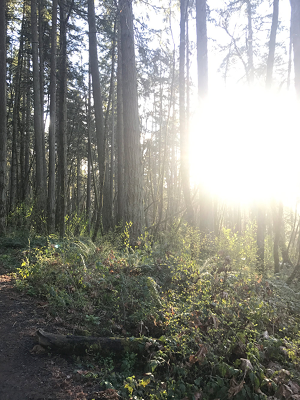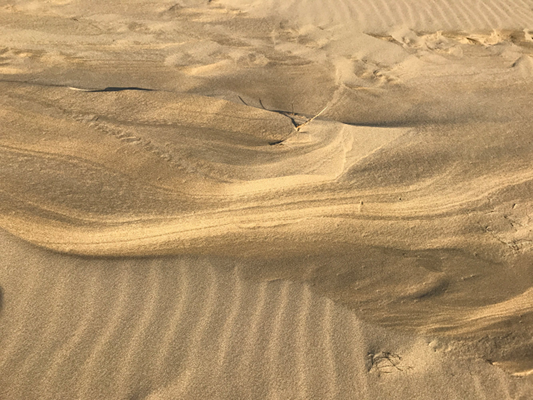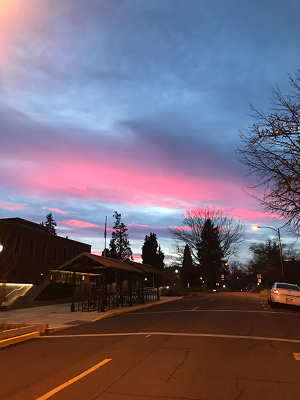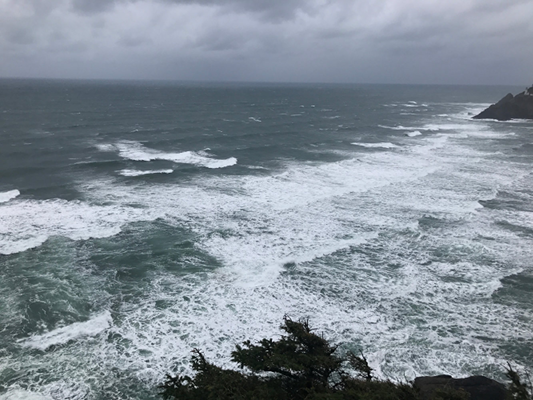Doctoral Supporting Area Capstone Project Lecture - Recital
April 28th, 2019, 4pm
鬼哭 Wailing Ghosts
Taken from a story by the same title in 聊斋志异 Strange Tales from a Chinese Studio (1740) published in Qing dynasty China by 蒲松龄 Pu Songling (1640 ~ 1715), 鬼哭 Wailing Ghosts explores different live processing aspects of voice and non-pitched instruments in addition to acoustic and theatric performance. The piece employs text-painting through live and synthetic timbres to portray a narrative heard in Mandarin and Sanskrit such that even those unfamiliar with these natural languages can comprehend. The text used is mostly from the above tale with an added Buddhist mantra of Ksitigarbha at the end.
To briefly summarize the tale: at the time of the Xie Qian troubles, the residences of the nobility were all commandeered by the rebels including the residence of Commissioner Wang. When the government eventually retook the town, every porch was strewn with corpses and blood flowed from every doorway. Since then, Wang frequently saw ghosts in the day and night, hearing the ghosts wailing in various corners of the house. He eventually ordered a lengthy ritual performed to depart the wandering souls. Ever since, the hauntings ceased.
I took a new approach in this piece when dealing with the text. Rather than setting the text in a traditional way, instead I act as narrator to present the text directly. Since Chinese is a melodic language, through the dramatic reading, the nuance of the melodic contour of the text can be easily perceived. The live-processed electronic sounds further amplify the character of the language. The Chinese opera gong used in this piece achieves multiple layers of functionality: from the timbral perspective, striking with mallet and palm brings out different levels of complex sounds; when used with singing, the gong acts as a filter giving the sound a special effect; from the theatric perspective, the gong acts as a mask, separating the narrator and the characters of the story.
鬼哭 节选
谢迁之变,宦第皆为贼窟。七襄之宅,扫荡群丑,尸填墀,血至充门而流。公入城,扛尸涤血而居。往往白画见鬼;夜则床下燐飞,墙角鬼哭。一日,王生皞迪,寄宿公家,闻床底小声连呼:“皞迪!皞迪!”已而声渐大曰:“我死得苦!”因哭,满庭皆哭。公于是设水陆道场,命释道忏度之。
Travel Montage of a Toy Piano
I wrote this piece with fun, humor, and maybe even a little absurdity in mind. It is a fresh breeze in my mostly serious-themed composition repertoire. The structure of the piece is episodic as reflected in the title. The piece divides into six episodes and each brings the listener (including me, the toy piano driver) to a different “realm” through the toy piano. I consider the toy piano as a travel machine (a time machine, a magic rug?), in different realms it plays different music accordingly. Despite the absurd realms one after another, the musical materials are nonetheless deeply connected.
The multi-media elements, and props used in this piece are designed to help enhance the effect of the montage.
无人堪寄 Wu Ren Kan Ji
Wu Ren Kan Ji is a work for solo cello and fixed media derived from my art song Gu Yan Er, originally for soprano, clarinet, and cello. While I extract and further develop musical ideas from the original art song, this new piece is another interpretation of the poem. As reflected by the title Wu Ren Kan Ji – translated no one to give to – this piece emphasizes the isolation and desperation of the poet at the loss of her husband and the realization that she will live the rest of her life in loneliness.
The poem I originally set in Gu Yan Er, and use in this piece as a driving story, is by Chinese female poet Li Qingzhao (1084 - 1151) from the Song dynasty. She was born to a wealthy family and became a scholar, which was unusual for a woman in that time. She also married her husband for love, unlike the arranged marriages common in normal families. This poem is part of a series of poems written to mourn her husband who died young. In this piece, the musical materials from the cello part of Gu Yan Er are developed into a new work. I use cello as the voice of the poet to tell the story and, through sound manipulation, I achieve some detailed text-painting that was not possible in Gu Yan Er.
孤雁儿藤床纸帐朝眠起,说不尽、无佳思。 沉香断续玉炉寒,伴我情怀如水。 笛里三弄,梅心惊破,多少春情意。 小风疏雨箫箫地,又催下、千行泪。 吹箫人去玉楼空,肠断与谁同倚? 一枝折得,人间天上,没个人堪寄。 |
A little wild gooseThis morning I woke,In a bamboo bed with paper curtains, I have no words for my weary sorrow, No fine poetic thoughts. The sandalwood incense smoke is stale, The jade burner is cold. I feel as though I were filled with quivering water. To accompany my feelings Someone plays three times on a flute “Plum blossoms are falling in a village by the river.” How bitter this spring is. Small wind, fine rain, hsiao, hsiao, Falls like a thousand lines of tears. The flute player is gone. The jade tower is empty. Broken hearted—we had relied on each other. I pick a plum branch, Heaven and earth; There is no one to give it to. |
Shan Shui Remix
Shan Shui Remix 2017 is based on my acoustic song cycle Shan Shui (Mountain River) which was originally composed for soprano and bassoon. The song cycle is comprised of four songs including one bassoon solo and one soprano solo. All songs set poems by Li Bai from the Tang dynasty China. In this electronic version, two remixes are based on recordings of the acoustic bassoon and soprano duo. I try to maintain the form of the acoustic songs and the texts while mixing in electronic elements to achieve a fuller dimension of text painting than was impossible with only acoustic instruments.
Shan (山) and shui (水), mountain and river, are strong themes in Li Bai’s poetry: he had a special attachment to nature’s magic. In this song cycle, I set three poems by Li Bai which discus either Mountain or River. The bassoon solo titled山的歌(Song of the Mountain) is the music poem that I wrote for the Mountain. In the Remix, I kept the bassoon solo to contrast the two fixed media pieces, making the Remixed song cycle a multimedia piece. The arrangement features bassoon solo in the middle, surrounded by the fixed media pieces forming the shape of the character shan (山).
Between the Mountain and I |
|
独坐敬亭山众鸟高飞尽,孤云独去闲。 相看两不厌,只有敬亭山。 |
Sitting above in Jingting MountainFlock of birds – High-flying, away. Lonely could – Gone away, alone. Looking at each other, Not bored. Only with Jingting Mountain. Between the River and Mountain |
Between the River and Mountain |
|
入清溪行山中轻舟去何疾!已到云林境。起坐鱼鸟间,动摇山水影。 岩中响自合,溪里言弥静。无事令人幽,停桡向余景。 |
Approaching Qingxi Among MountainsSmall boat going fast! Arrived at a place, trees like clouds. Looking down—fish; looking up—birds; I move, shaking the mountain refection. The sound of rocks inside the mountain, Makes the river sound even quieter. Having nothing to do, I enjoy a quiet scene; Must stop the boat to face the shadow of sunset. |
Doctoral Degree Recital
November 5th, 2018, 7:30pm
Bei--Initial Salutation for cello, percussion and voice (2015)
This piece is greatly inspired and influenced by the Great Compassion Mantra (大悲咒) which is one of the most important mantras in Buddhism. The title Bei comes from the Chinese pinyin of 悲 which, in this context, means compassion. The text sung in this piece is the initial salutation of the mantra. The Great Compassion Mantra is written in Sanskrit and was translated into Chinese in the 7th century. In this piece, I set the Chinese Pinyin pronunciation.
Text: (Sanskrit transliteration)
Great Compassion Mantra
Initial Salutation:
nā mo hē là dá nà duō là yè yé
nā mo a lī yé. wó lú jié dì shuò bō là yé
pú tí sà duǒ wó yé mó hā sà duǒ wó yé mó hā jiā lú ní jiā yé
English translation
Adoration to the Three Gems, adoration to the noble Avalokiteśvarā, the enlightened sentient being, the great being, the merciful (one)!
Xun 寻 (2016)
Xun (寻) in Chinese means searching. The searching in this piece can be between two instruments and it can also be the searching of each instrument on their own. It could be a searching of the timbres of the instruments or the expressive language. What are the instruments searching for and do they find it?
Gu Yan Er 孤雁儿 (2015)
Text: (In Chinese)
孤雁儿
李清照 (1084 - ~1151)
藤床纸帐朝眠起,说不尽、无佳思。
沉香断续玉炉寒,伴我情怀如水。
笛声三弄,梅心惊破,多少春情意。
小风疏雨箫箫地,又催下、千行泪。
吹箫人去玉楼空,肠断与谁同倚?
一枝折得,人间天上,没个人堪寄。
English translation:
A little wild goose
Li Qingzhao (1084-~1151)
Translated by Kenneth Rexroth and Ling Chung, Edited by Li Tao
This morning I woke
In a bamboo bed with paper curtains,
I have no words for my weary sorrow,
No fine poetic thoughts.
The sandalwood incense smoke is stale,
The jade burner is cold.
I feel as though I were filled with quivering water.
To accompany my feelings
Someone plays three times on a flute
"Plum blossoms are falling
in a village by the river."
How bitter this spring is.
Small wind, fine rain, hsiao, hsiao,
Falls like a thousand lines of tears.
The flute player is gone.
The jade tower is empty.
Broken hearted-we had relied on each other.
I pick a plum branch,
Heaven and earth;
There is no one to give it to.
Chou Xi 丑戏 (2015)
Xi means play or opera: this piece is inspired by Peking opera. There are five categories of character in Peking opera and Chou is one of them. Chou's role in Peking opera is to entertaining and this character never sings. Instead it has a lot of body movements and a lot of different ways to walk, sometime with long passages of speaking normally accompanied by percussion from the orchestra.
Shui Sheng Hua 水生花 (2018)
Shui Sheng Hua -- translated as water spawned flower -- is written for solo flautist. Originally I wrote this piece for Linda for a collaboration between her and OCF composers to explore the sonic world of solo flute.
Water Sapphires (2017)
Water Sapphires is inspired by the astonishing scene of Ruth glacier in Denali National Park, Alaska. I came cross pictures of the Ruth glacier from National Geographic. The glacier appears in a triple color of different degrees of blue. The purity of the blue colors looks like liquid sapphires. The trio instrumentation of this piece perfectly represents the tri-color of the nature scene. The two sections symbolize my two interpretation of the glacier: the torrential flow and the stationary gem.

photo: Aaron Huey
Shan Shui Song cycle 山水歌集 (2015)
Shan Shui Remix 2017 (part 1 and part 2) is based on my acoustic song cycle Shan Shui which was originally composed for soprano and bassoon. The song cycle has four songs, all setting poems by Li Bai from the Tang dynasty China. In these two remixes, I try to maintain the form of the acoustic songs, mixing in electronic elements to archive a fuller dimension of text painting that was impossible with only acoustic instruments.
Four Scenes from the West (2018)
Four Scenes from the West for flute, clarinet, haegeum and cello is inspired by four specific photographs that I took of the astonishing scenery of the American West coast, specifically, sunbeams through the forest, sand formation, colorful twilight, and stormy surf. In the piece, four musical sections paint sonic impressions of these scenes.



